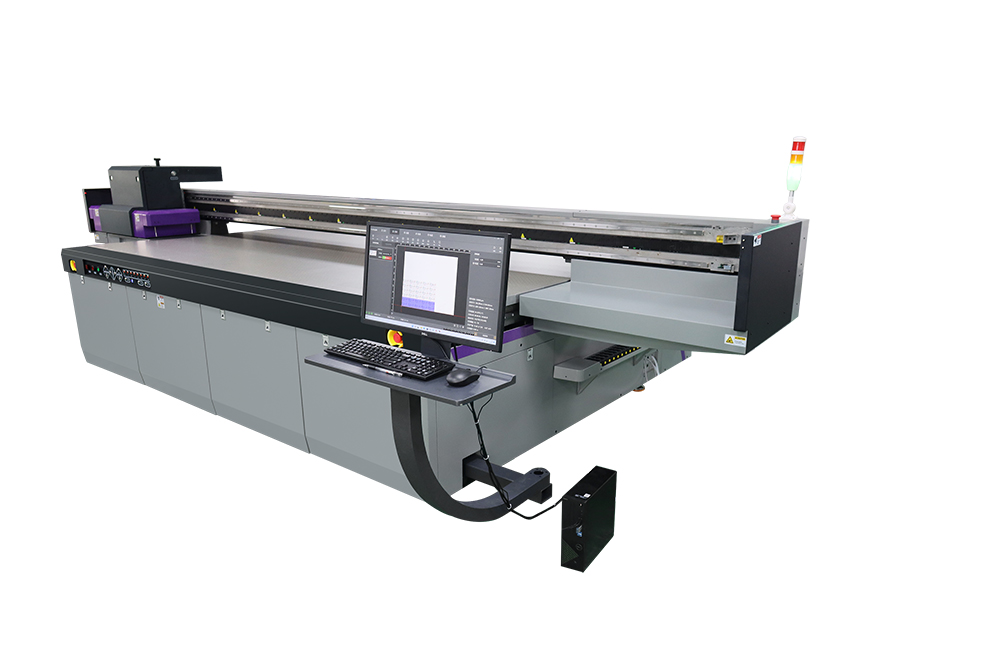What Is the Role of RIP Software in UV Flatbed Printing?
What Is the Role of RIP Software in UV Flatbed Printing?
In the realm of digital printing, UV flatbed printing has emerged as a versatile and efficient technology, offering high-quality prints on a wide range of materials. This printing method, which utilizes ultraviolet (UV) light to cure ink instantly, has gained popularity for its ability to produce durable and vibrant images. At the heart of this technology lies a crucial component: Raster Image Processor (RIP) software. This article delves into the role of RIP software in UV flatbed printing, exploring its functions, benefits, and how it contributes to the overall efficiency and quality of the printing process.

Understanding UV Flatbed Printing
UV flatbed printing is a digital printing technique that allows for direct printing onto various flat or slightly curved surfaces. It employs UV-curable inks that are instantly dried and cured by exposure to UV light after being deposited onto the substrate. This process enables the ink to bond quickly and securely to the material, resulting in prints that are resistant to fading, scratching, and environmental factors. UV flatbed printers can accommodate a diverse array of materials, including glass, wood, metal, plastic, and more, making them suitable for a wide range of applications from signage to decorative items.
The Essence of RIP Software
RIP software is a fundamental element in digital printing systems, responsible for processing print data before it is sent to the printer. Essentially, RIP software acts as a translator, converting complex print files into a format that the printer can understand and execute. In UV flatbed printing, RIP software plays a pivotal role in ensuring that the print job is optimized for both speed and quality.
Functions of RIP Software in UV Flatbed Printing
File Interpretation and Optimization:
RIP software interprets the print data, which may include various file formats such as PDF, TIFF, or EPS. It optimizes these files for printing by converting them into a raster image format, where each pixel is defined by its color and position. This conversion process ensures that the printer receives clear instructions on how to deposit ink onto the substrate.
Color Management:
Color accuracy is paramount in UV flatbed printing, especially for applications requiring precise color matching. RIP software manages color by applying color profiles and corrections to ensure consistent and accurate color reproduction. It also handles color separation, dividing the full-color image into individual channels corresponding to the printer’s ink colors.
Print Quality Enhancement:
To achieve high-quality prints, RIP software employs various algorithms to enhance image resolution, sharpness, and detail. This may involve techniques such as dithering, which simulates additional colors by varying the size and spacing of ink dots, or smoothing, which reduces the visibility of pixelation.
Print Speed Optimization:
UV flatbed printers are designed for efficiency, and RIP software contributes to this by optimizing the print path and ink deposition rates. It calculates the most efficient way to lay down ink, minimizing unnecessary printer movements and reducing print time.
Material Compatibility:
Different materials require specific printing parameters for optimal results. RIP software allows for the creation of custom print profiles tailored to the substrate being used, ensuring that the ink is deposited correctly and adheres well to the material.
Benefits of RIP Software in UV Flatbed Printing
Improved Print Quality:
By optimizing color management, resolution, and ink deposition, RIP software significantly enhances the overall print quality, resulting in sharper images and more vibrant colors.
Increased Efficiency:
The ability to process complex print files quickly and optimize print paths leads to faster print speeds and reduced production time. This efficiency is crucial for businesses operating in high-volume printing environments.
Versatility:
RIP software enables UV flatbed printers to handle a wide range of materials and print jobs, from simple graphics to complex, multi-layered designs. This versatility expands the potential applications of UV flatbed printing.
Cost Savings:
Optimized print jobs reduce ink waste and minimize the need for reprints due to errors or quality issues. This translates to cost savings in terms of both materials and time.
Easy Integration and Customization:
Modern RIP software is designed to integrate seamlessly with various UV flatbed printers and can be customized to meet specific printing requirements. This flexibility allows printers to adapt to different projects and client needs easily.
Conclusion
In conclusion, RIP software is a vital component in UV flatbed printing, playing a multifaceted role in ensuring optimal print quality, efficiency, and versatility. From file interpretation and color management to print speed optimization and material compatibility, RIP software’s functions are integral to the success of UV flatbed printing applications. As technology continues to advance, RIP software will likely evolve further, introducing new features and capabilities that push the boundaries of what is achievable in digital printing. For businesses and individuals involved in UV flatbed printing, understanding and leveraging the power of RIP software is key to staying competitive and delivering exceptional print results.
